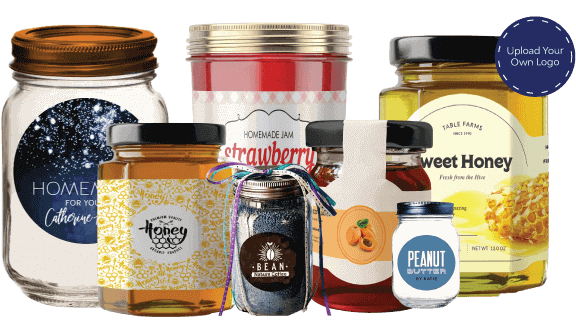Mason Jar Label can be quite useful for organizing and identifying content, but removing these labels can sometimes be challenging. When dealing with sticky labels on mason jars, it’s important to use the right techniques to ensure the jar remains clean and undamaged. In this guide, we’ll explore various methods to remove sticky labels effectively, making your mason jars ready for reuse or repurposing.
Methods for Removing Sticky Labels from Mason Jars
Method 1: Soaking in Warm, Soapy Water
One effective way to remove labels is to soak the mason jars in warm, soapy water. To start, fill a basin or sink with hot water and add a few drops of dish soap. Next, place the mason jars into the water and allow them to soak for about 30 minutes. This process will help to loosen the adhesive, making it easier to peel off the labels.
After soaking, use a sponge or cloth to gently rub the label and its residue. If necessary, apply a bit of extra dish soap to the sponge. Rinse the jars thoroughly with clean water to remove any soap or adhesive remnants. Finally, dry the jars with a clean towel.
Method 2: Using Baking Soda and Vinegar
Another method involves using baking soda and vinegar. Begin by sprinkling a generous amount of baking soda onto the sticky area of the label. Then, pour white vinegar over the baking soda. Combining baking soda and vinegar will create a fizzing reaction that helps break down the adhesive.
Let the mixture sit for about 10 minutes. Afterward, use a sponge or scrub brush to remove the label and adhesive. Rinse the jar with water to clear away any residue and dry it with a towel. This method is particularly useful for labels that have been on the jar for a long time.
Method 3: Applying Rubbing Alcohol or Acetone
For more stubborn labels, rubbing alcohol or acetone can be effective. First, soak a cotton ball or cloth with rubbing alcohol or acetone. Next, apply it to the label and adhesive, letting it sit for a few minutes. This method works because these solvents dissolve the adhesive, making it easier to remove.
Once the label has softened, use a scraper or your fingers to peel it off. Be sure to wash the jar thoroughly with soap and water to remove any solvent traces. Finally, dry the jar completely. If the label is particularly difficult to remove, you may need to repeat the process.
Method 4: Using Commercial Adhesive Removers
Commercial adhesive removers are specifically designed for removing sticky residues. To use one, follow the manufacturer’s instructions carefully. Typically, you apply the remover to the label, let it sit for the recommended time, and then peel off the label.
After using an adhesive remover, wash the jar thoroughly to remove any remaining product. Additionally, ensure that no chemical residues remain on the jar before using it again. This step is crucial for ensuring that your jar is safe for food storage or other uses.
Tips for Easy Removal
Pre-Treatment Tips
Before starting the removal process, consider using a razor blade or utility knife to gently lift the edges of the label. This approach helps to break the seal of the label and can make the overall removal process easier. Furthermore, applying a small amount of oil, such as vegetable or olive oil, to the label can help loosen the adhesive. Also, if the label is old or brittle, it may come off more easily after soaking.
Another helpful tip is to use a mixture of baking soda and a small amount of oil. Apply this mixture to the label and let it sit for about 10 minutes. This technique can aid in loosening stubborn adhesive residues.
Post-Removal Care
After the label is removed, check the jar for any remaining adhesive residue. If you find any, you can use a small amount of rubbing alcohol or vinegar to clean it off. Additionally, a gentle scrub with baking soda can help remove any stubborn residue. For any remaining sticky spots, try using a commercial adhesive remover as a final step.
Finally, always ensure that the jar is completely clean and dry before reusing or repurposing it. This precaution helps to maintain the jar’s condition and ensures that it is ready for its next use. Proper cleaning not only enhances the jar’s appearance but also prepares it for effective reuse in various applications.
Conclusion
Removing sticky labels from mason jars can be achieved using various methods, depending on how stubborn the labels are. Whether you choose to soak in warm, soapy water, use baking soda and vinegar, apply rubbing alcohol or acetone, or employ commercial adhesive removers, each method has its advantages. By following these steps, you can effectively clean your mason jars, making them ready for new uses.
In summary, dealing with sticky labels doesn’t have to be a hassle. With the right techniques, you can remove labels efficiently and keep your jars in excellent condition. If you’re looking for additional packaging solutions or custom labels, many Packaging Companies In Canada offer products and services to meet your needs. By utilizing these resources, you can ensure that your jars are not only clean but also well-prepared for any future projects or uses.


